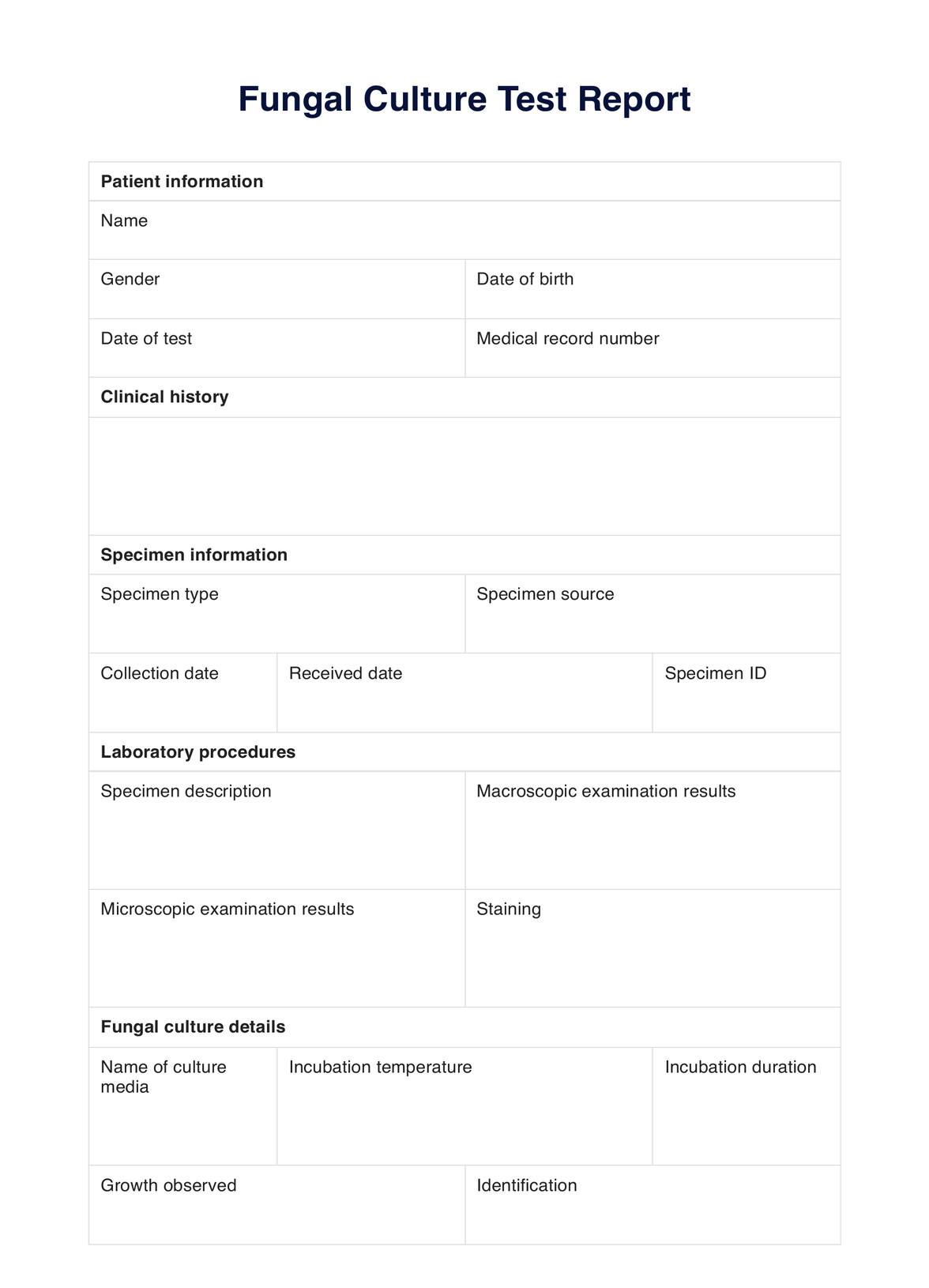A Fungal Culture Test is typically requested by healthcare professionals, such as doctors or nurses, when a patient presents with symptoms that may indicate a fungal infection. These symptoms can include skin rashes, respiratory issues, and digestive problems. People with weakened immune systems or chronic health conditions are more likely to undergo this test.

Fungal Culture Test Reports
Access a free Fungal Culture Test Report template and document your patient's results easily. Get the template and PDF example here.
Fungal Culture Test Reports Template
Commonly asked questions
Fungal Culture Tests are used when a healthcare professional suspects a patient may have a fungal infection. This can be determined by the presence of symptoms or risk factors and the results of other diagnostic tests. Fungal Culture Tests can also be used to monitor the effectiveness of treatment for an existing fungal infection.
The time it takes to complete a Fungal Culture Test may vary depending on the specific type of fungus being tested for and the laboratory conducting the test. Generally, results can be expected within 2-4 weeks. However, some fast-growing fungi may produce results in just a week.
EHR and practice management software
Get started for free
*No credit card required
Free
$0/usd
Unlimited clients
Telehealth
1GB of storage
Client portal text
Automated billing and online payments











